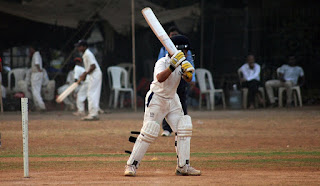The unpredictable bounce of a cricket ball is primarily a result of its interaction with the playing surface, the condition of the ball, and the various forces acting on it during its trajectory. This phenomenon can be explained through principles of physics and material science.
Pitch Conditions: The condition of the cricket pitch plays a significant role in determining ball bounce. Dry, cracked, or uneven surfaces can cause irregularities in bounce due to variations in friction and impact. Hard pitches provide more consistent bounce, while softer pitches may lead to unpredictable deviations.
Ball Seam and Surface: The seam orientation and condition of the cricket ball influence its bounce. A shiny side with a pronounced seam can cause the ball to deviate unpredictably as it makes contact with the surface. Scuffed or rough areas on the ball can also create variations in bounce due to changes in aerodynamics.
Spin and Revolutions: Spin bowlers impart spin on the ball, creating differences in air pressure on either side. This causes the ball to move erratically off the pitch, leading to unpredictable bounce. The number of revolutions per minute and the type of spin (off-spin, leg-spin, etc.) influence the extent of these deviations.
Bowling Speed and Angle: Faster bowlers generate more bounce due to the energy transferred from the ball to the pitch. The angle of delivery also affects bounce, as a steeper angle can result in higher bounce and more pronounced variations.
Ball-Pitch Interaction: The bounce of a cricket ball is influenced by how it compresses against the pitch upon impact. Factors such as the hardness of the ball, pitch elasticity, and the angle of impact contribute to the resulting bounce. These interactions are complex and can lead to unexpected deviations.
Weather and Atmospheric Conditions: External factors like wind, humidity, and temperature can impact ball behavior. Changes in air density and humidity can alter the aerodynamics of the ball, affecting its flight and bounce.
In summary, the unpredictable bounce of a cricket ball is a culmination of multiple factors, including pitch conditions, ball seam and surface, spin, bowling speed and angle, ball-pitch interaction, and atmospheric conditions. The intricate interplay of these elements introduces complexities into the ball's trajectory, making it challenging for batsmen to anticipate and react to its movement. As a result, cricket remains a sport that demands both skill and adaptability from players on both sides.
Photo: Pixabay (free)

No comments:
Post a Comment
Thanks for your comment.